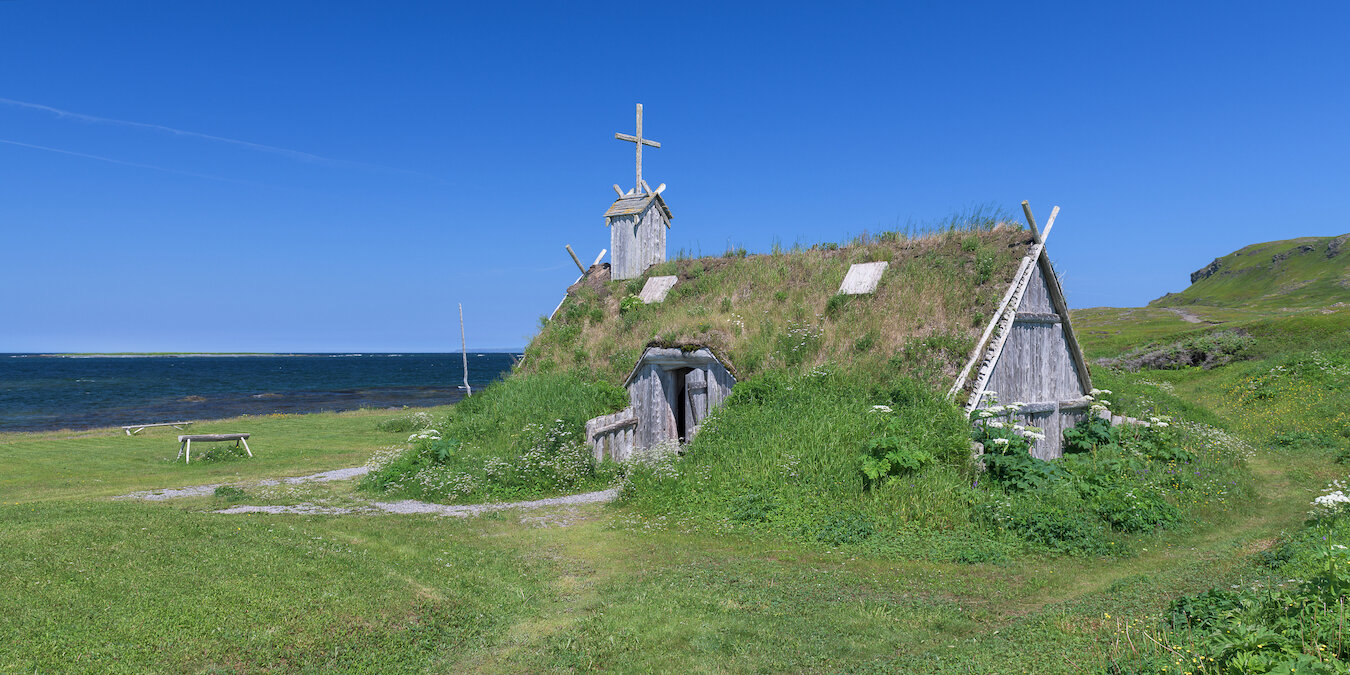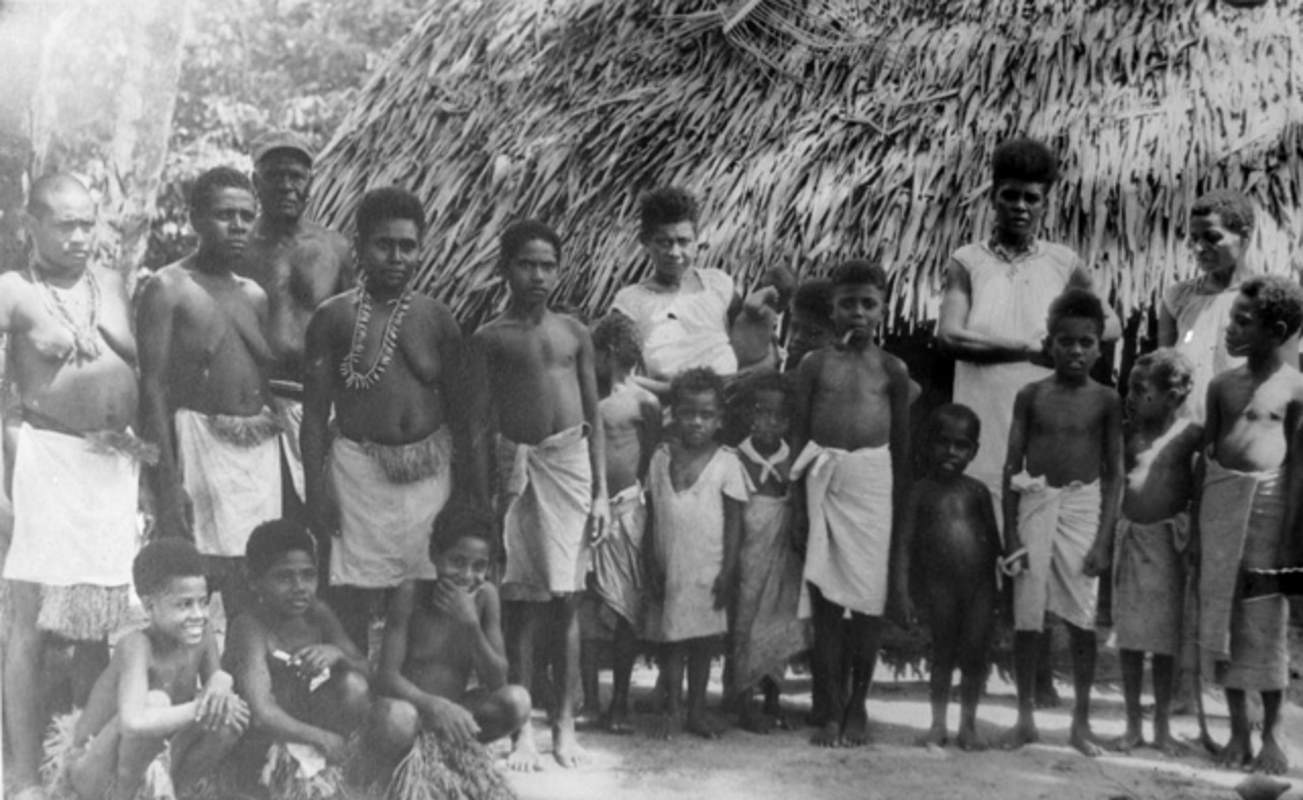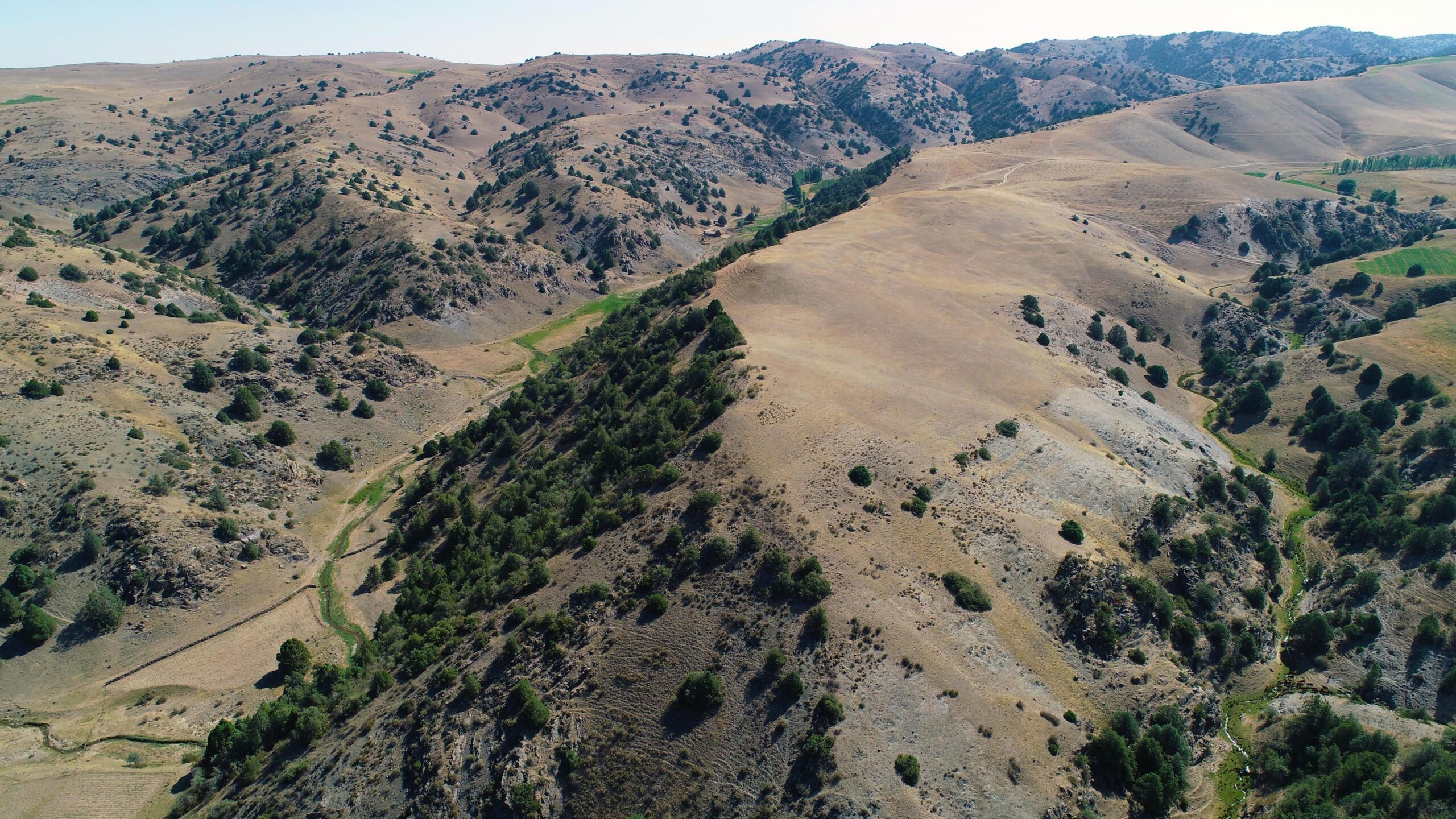PICTURED: The reconstructed archaeological site at L’Anse aux Meadows, Newfoundland, also known by the mythical name of “Vinland,” home to a briefly held outpost of Viking civilization in North America.
“The nature of the country was, as they thought, so good that cattle would not require house feeding in winter, for there came no frost in winter, and little did the grass wither there,” translation from the Saga of the Greenlanders.
Settling forever the debate on when Europeans first discovered the Americas, an international science team have concluded, remarkably, that it was precisely 1,000 years ago that the Western Hemisphere was reached by Leif Erikson, who beat Columbus by nearly five-hundreds years.
Michael Dee et al. divined this perfect data by counting the tree rings in the wood used to build the Vikings’ settlement in Newfoundland at L’Anse aux Meadows, up from 992, the date when an enormous solar storm produced a distinct radiocarbon signal that can be seen in the wood.
Reaching North America was the pinnacle of achievement for a master-seafaring people who had already achieved incredible feats of navigation, and whose history was chronicled in the “Vinland Sagas,” historical epics recounting the tales of Erik the Red, who landed first in Greenland, and of Erik’s son Leif Erikson, who landed in North America along with his friend Karlsefni.
L’Anse aux Meadows was inscribed as a UNESCO World Heritage Site in 1978, when it was described as a settlement from the 1200s.
“With the growth of the Enlightenment and the growth of the scientific method, there was probably a growing skepticism in the West towards a lot of what would be regarded as folklore and myth,” says Michael Dee, a professor in physical sciences at the University of Groningen, who has a distinct interest in applying his skills to solve archaeological mysteries. “There are parts of the sagas which are fantastical, even in the Vinland Saga, you have dead people that speak and stuff like that”.
“The idea that the Vikings could have been there before Columbus was a bit anti-establishment and a little bit challenging”.
PICTURED: A graphical description of the different sailing routes to Greenland, Vinland (Newfoundland), Helluland (Baffin Island) and Markland (Labrador) travelled by different characters in the Icelandic Sagas, mainly Saga of Erik the Red and Saga of the Greenlanders. Modern English versions of the Norse names. CC 3.0.
A new method
At L’Anse aux Meadows, wood was chopped down with metal tools, ruling out Native American involvement. Timber-framed dwellings were constructed with peat and turf roofs. It was these ancient timbers which Dee et al. used for their brand new method of counting tree rings to triangulate the dates of solar storms, which they had used once before in Russia.
“Normal radiocarbon dating gives you dates that are a few hundreds around the event, so this method could really change things,” Dee told WaL. “You need various things including wood usually to give you a good date”.
However the timbers were excavated almost 40 years ago, and Dee’s team were essentially heading to Newfoundland on the mere hope they would be able to find some of good enough quality samples to date. Fortunately for Dee, who isn’t an archaeologist, his co-author on the paper, is perhaps the number one authority figure on the Vinland Sagas, and of L’Anse aux Meadow.
“Birgitta [co-author] had kept from the excavations, finishing in the early-1980s, bits of wood that most people, even archaeologists would have thrown away, and she kept them in freezers perfectly preserved, because she knew that someday they would be of use to science,” he said. “Here we are 40 years later with a brand-new technique, and she just opened up the fridge and it was like a gold mine”.
“We were expecting to measure a couple of tree rings and we would get a spike and the second date would be 998 or something. Well we kept measuring and measuring into the trees and after 29 rings we see the distinct signal that shows from 992 to 993. So then we did the math on that and we realized that was this year, and we were really relieved it wasn’t last year, because then we would have missed it.”
“Relief was the number-one emotion. If we had the nine-hundredth and ninety-ninth anniversary, it wouldn’t be the same,” he said.
PICTURED: Norwegian archaeologist Anne Stine Moe Ingstad (1918-1997) in 1963 when she led the excavation of the Norse settlement L’Anse aux Meadows.
Re-reading history
Like other famous discoveries involving the Viking Age, when after a growth in the population following a rise in the average global climate, sailors, traders, and armies left Scandinavian shores in droves, the discovery at L’Anse aux Meadows features one of those exciting moments when oral history and archaeological history correlate with each other.
“If you read the sagas literally, some of the individuals mentioned are historical figures from Europe, and we know when these kings and so on were in power, so you can kind of triangulate when the Vinland voyages might have taken place,” Dee notes.
One such man is Olaf Tryggvason, a famous Christian warrior king of Norway, who Leif Erikson is written to have worked for. It’s reckoned that Tryggvason held the throne between 960 and 1000, correlating with the 993 date of Dee et al.
Dee believes he can use his method to tie together dates and historical figures, for example the great “Kings list” in ancient Egypt, where detailed progression of rulers exists as a “floating chronology”.
“You have these long connected chronologies but we don’t know exactly where they sit in absolute time. This is true for example of the pyramid age in Egypt, we have these long lists of dynasties, but we don’t know where to put it in time, so you don’t know how to compare it to the neighbors up in Mesopotamia or to compare it to Greece, or to compare it to other places,” Dee says.
“But if you could, for example, get a structure that was preserved by the desert, and if there were a spike [a solar storm] you could use… you could potentially connect a monument to an exact year Sometimes these monuments—kings wrote about them: ‘in my third year of my reign I finished this thing’ and then boom you’ve got hundreds of years anchored down in time”.
As for Vinland and L’Anse aux Meadows, the whole endeavor was rather short-lived, and could have lasted less than 2 years. A press release regarding the work details that botanical evidence of a plant species which grows in the eastern North America, has been found among the dwellings. The catch is that the plant in question, butternuts, and butternut wood, has never of its own abilities and tolerances, made it so far north.
“What we do know is that it never grew up there at the site, and that they would have had to go south to get it,” says Dee, who hopes to get more money to return to L’Anse aux Meadows for further work. “In the sagas they do talk about sailing south from there, so that seems to tally up. Where exactly they went, we don’t know”.





